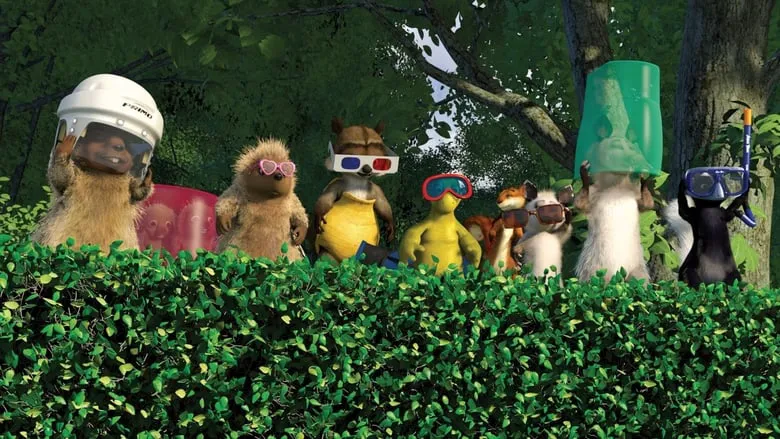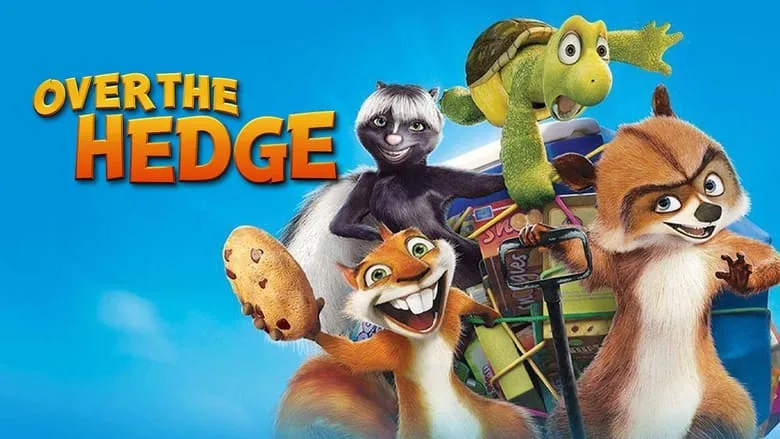Over the Hedge: A Buffet of Blandness?
“Over the Hedge” (2006) – ostensibly a children’s film, and perhaps only for children. While it offers some entertainment, it’s far from exceptional. It’s wholesome, virtuous, leaving adults with little to do but retreat to the concession stand for the very chips and cola the movie subtly critiques. Technically, the animation rivals “Finding Nemo” (2003), even surpassing it in some aspects. However, the narrative lags behind the likes of “Madagascar” (2005), feeling as distant as a rural village from a bustling metropolis.

The creators seemed to have missed the memo: children’s entertainment deserves the same level of care and quality as adult fare, just with a slightly different approach.
A Suburban Awakening
In a newly developed suburban area, a small patch of woodland remains. Within a hollow log, a group of hibernating animals awakens: a male turtle, a female skunk, a hyperactive squirrel, an opossum with her daughter, and a pair of porcupines with their young. They need to gather supplies for the coming winter, but a tall hedge has sprung up near their oak tree, beyond which lies asphalt and a rather unpleasant homeowner. Enter RJ, a wandering raccoon with a “project” to solve their problems. He arrives from beyond the hedge, but the animals are unaware of his deceitful nature. He owes a debt to a bear he wronged, and the only way to repay it is to exploit the woodland creatures and rob them blind. The situation unfolds like a comedic play. The raccoon is the con man, the turtle the authority figure, and instead of an inspection, it’s all about food, food, food.
Lost in Translation?
Perhaps American audiences, caught up in the current anti-obesity wave, might find this more engaging. There’s a growing genre of films tackling the issue of fast food. But overall, the film feels like a case of “much ado about nothing,” with only a handful of genuinely funny moments. The lecture on how “animals eat to live, while humans live to eat,” is illustrated with a surprising degree of accuracy. Near the end, the hyperactive squirrel briefly stops the Earth’s rotation, and the zero-gravity effects are cleverly executed. And perhaps the turtle occasionally losing his shell provides some amusement.

The rest of the film focuses on the technical aspects of the raids behind enemy lines and the subsequent chases involving the unpleasant homeowner, a vicious dog, and a dim-witted exterminator. Breaking into refrigerators, playing dead, and flying with an umbrella – yes, it’s visually impressive. But the characters are too one-dimensional, lacking depth despite the 3D animation, and the plot is ultimately toothless. The raccoon schemes, and he’s immediately showered with affection. He schemes again, and he’s showered with even more affection.
Peripheral Characters Steal the Show
There are only a few well-developed characters, and they’re relegated to the sidelines. A fat Persian cat, consciously existing “for beauty,” is a highlight. The bear, with his monologue on treachery as a way of life, is also intriguing. It would have been even more interesting to hear Nick Nolte’s original performance. The raccoon is somewhat monotonous, despite his prominent role, while the bear and cat are underutilized. It seems that producer Jeffrey Katzenberg (“Shrek,” “Shrek 2”) and directors Tim Johnson and Karey Kirkpatrick weren’t entirely sure what they were aiming for. Judging by their photos, these individuals don’t suffer from obesity, but they know it’s a trendy topic, that animated films about animal gangs are popular, and that a squirrel is a must-have. The squirrel here is original, bearing no resemblance to those in “Ice Age” or “The Wild,” but soon we’ll be measuring the quality of animation by the number of hairs in a tail. Perhaps this is all that children require. After all, children will gnaw on a wooden twig, especially if it’s from America.